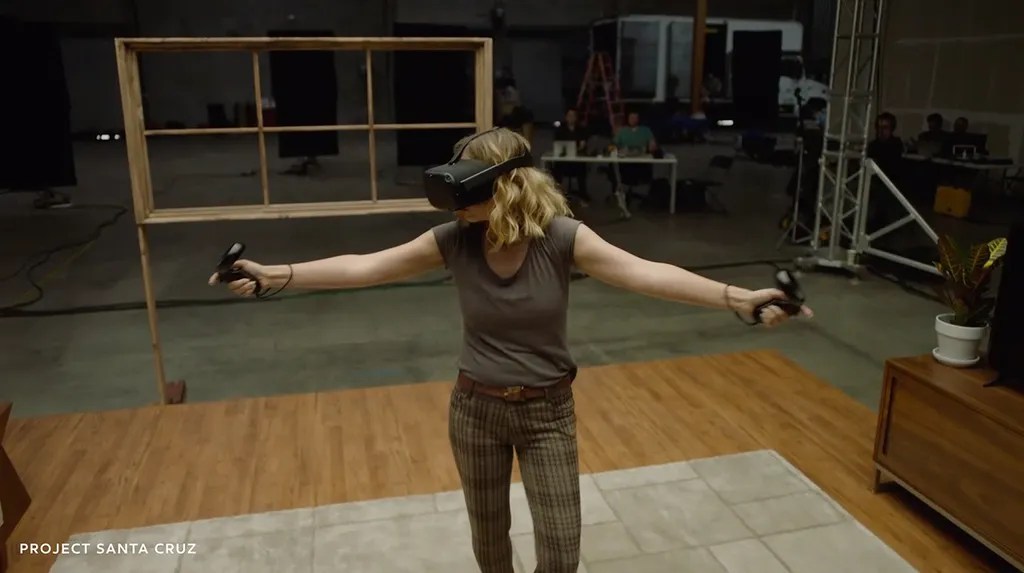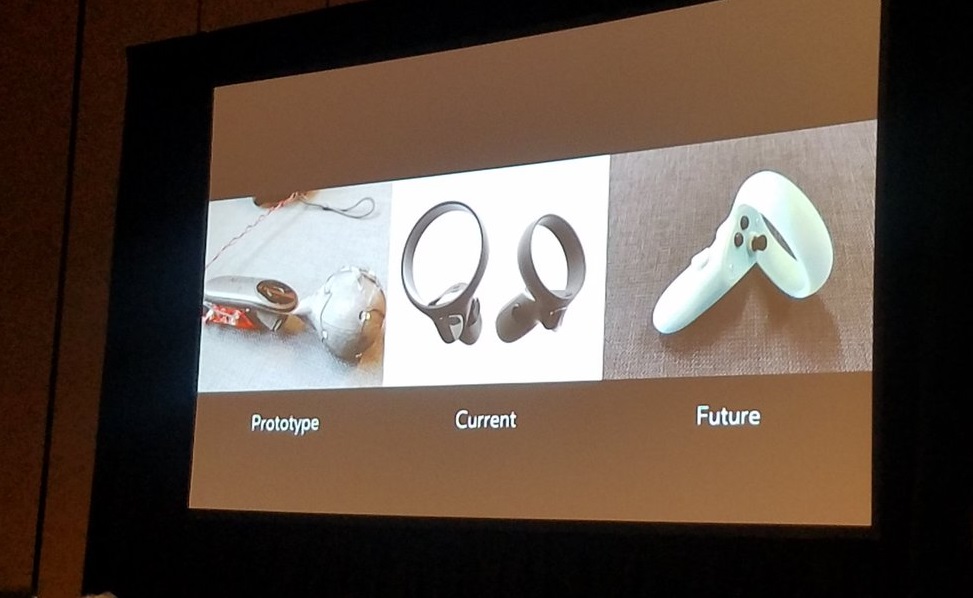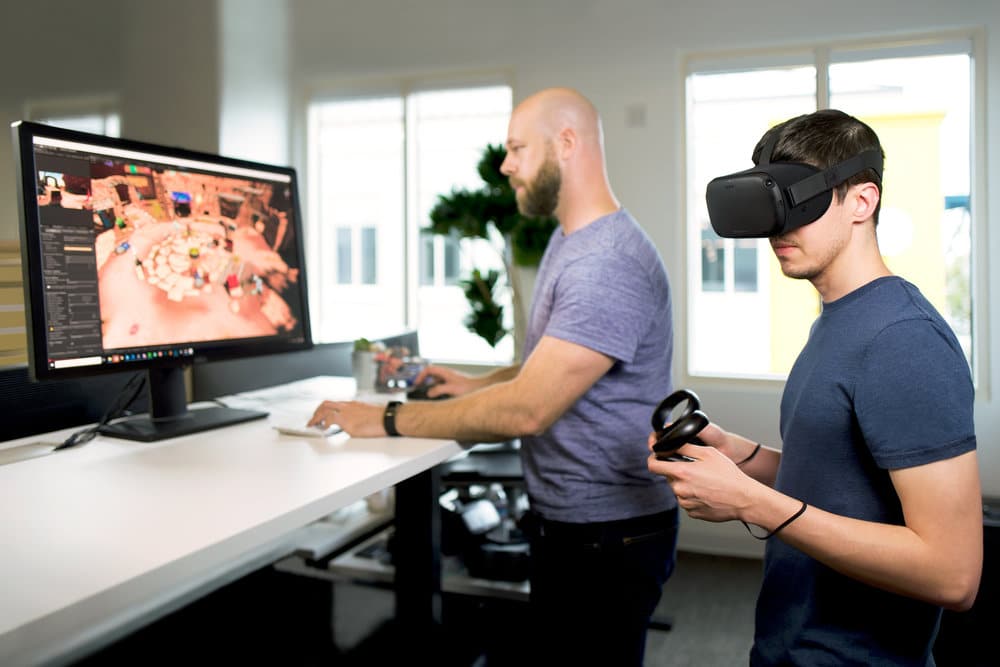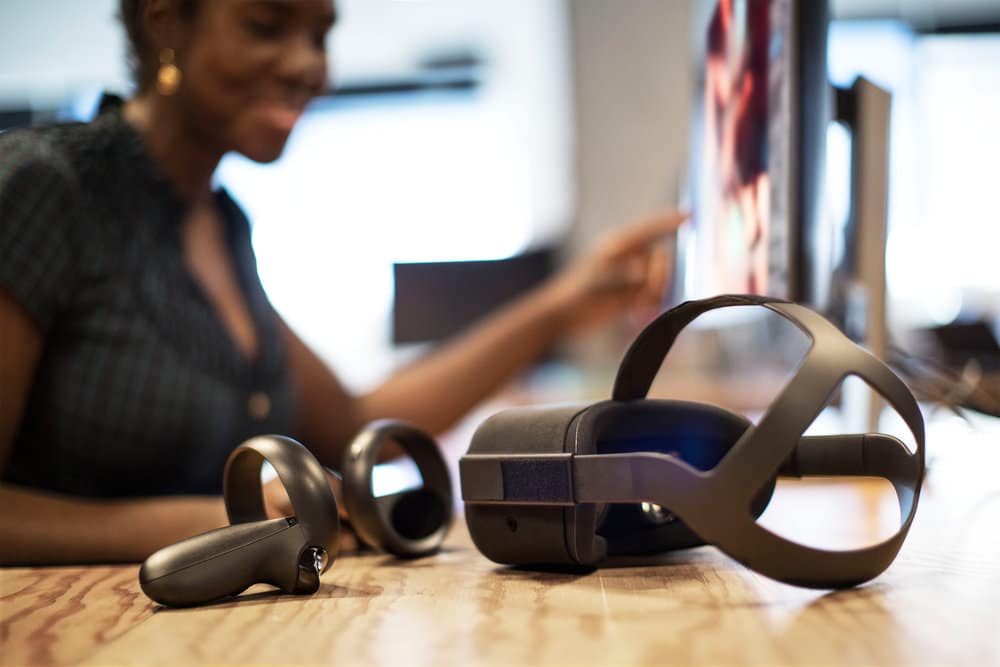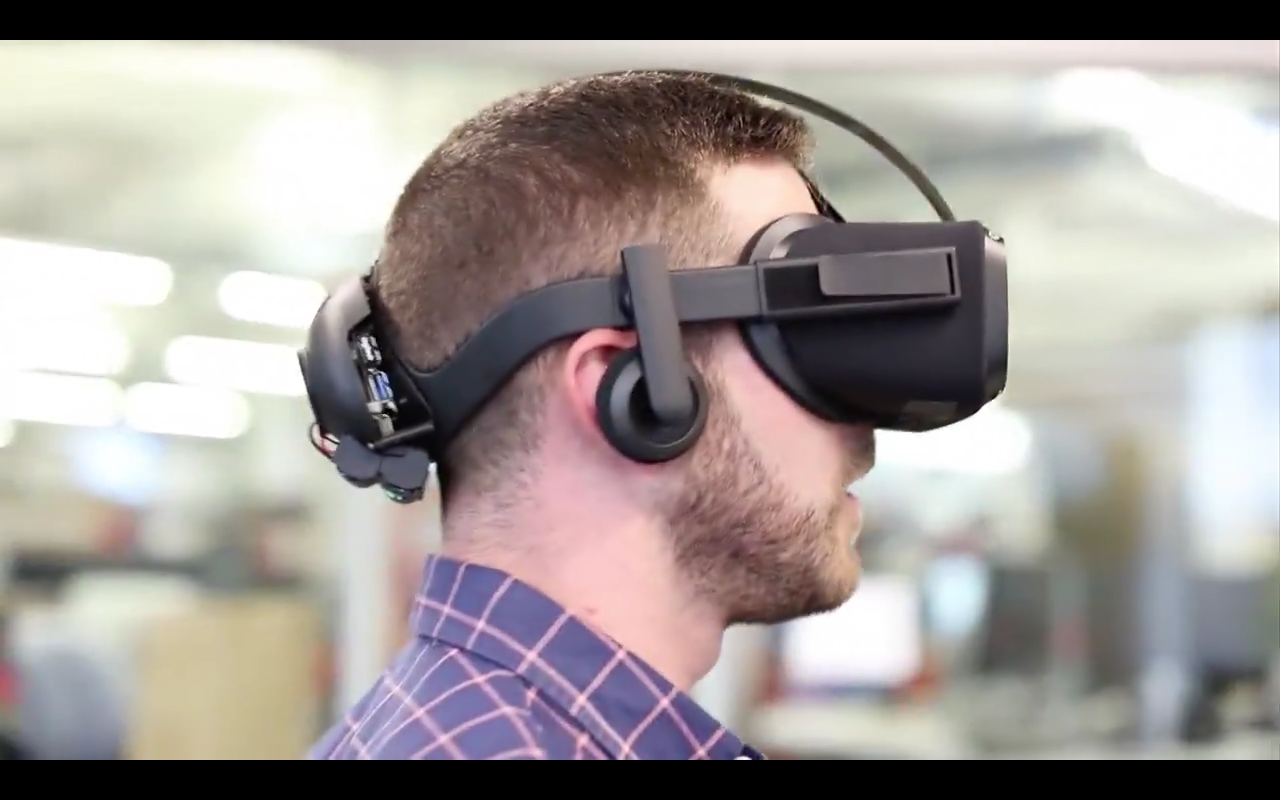It’s Oculus Connect week, and that means we’re soon to be showered in updates from Facebook’s VR team. Heading into this year, we’re most intrigued to learn the latest on the company’s newest standalone VR headset, codenamed Santa Cruz.
As you probably know, Oculus introduced its Go standalone headset earlier this year at an affordable $199. It’s a great entry point for VR, but Santa Cruz promises to take another step forward. Before we get an update tomorrow, let’s go over what we know about Santa Cruz so far.
Tracking Is Less Like Go, More Like Rift
Santa Cruz is the first Oculus headset to use inside-out tracking technology. That means that the sensors needed to discover your position in a room and then replicate your movements in the virtual world are fitted to the headset itself, and not placed around the room like with Rift.
The headset will offer a much more robust tracking system then Go, then, allowing users a full six degrees of freedom (6DOF) of movement. They can lean, crouch and even walk with those movements mirrored inside VR. At the same time, we haven’t gone hands-on with the final product so we can’t confidently claim the tracking is as robust and reliable as what’s on Rift, but it’s definitely a step in the right direction.
Its Controllers Are Like Oculus Touch 2.0
Other standalone headsets like Lenovo’s Mirage Solo already have 6DOF tracking, though, so what makes Santa Cruz so unique? Simply put, it’s the controllers. The kit supports two devices that completely bring your hands into VR with the same freedom that the headset enjoys. Other devices still only offer pointer-based 3DOF controls or are only just beginning to explore 6DOF control.
The Santa Cruz controllers are essentially a new iteration of Oculus’ Touch controllers for the Rift. They’ve both got two face buttons, trigger and grip buttons and, as introduced at GDC this year, analog sticks too. The only real difference is that the tracking ring used to find the controllers in VR now loops up over the device instead of under it so Santa Cruz’s sensors can see it easier. Whether or not the level of control will match Rift and Touch remains to be seen, but it’s promising.
Expect Ports Of Oculus Rift Games
Sources have confirmed to UploadVR that Oculus is looking to get ports of Rift games onto Santa Cruz when it launches. Tellingly, one of the sessions at Connect this year will detail porting games from the PC VR headset to the standalone device. Whereas Oculus Go shares a content library with Gear VR, then, it’s very possible that Santa Cruz will have a library much more comparable to Rift, albeit with some compromises. No doubt Oculus will be prepping exclusive apps for the device, too.
…But It’s Not A Wireless Rift
While Santa Cruz’s tracking functionality might be closer to Rift, it’s only realistic to expect that its internal tech specs will be closer towards Gear and Go. We don’t know Santa Cruz’s tech specs, but mobile devices just can’t measure up to what’s possible with the latest Nvidia and AMD graphics cards (which is truer than ever with the recent launch of the former’s RTX line).
Whatever ports do come Santa Cruz from Rift will likely make some serious concessions, then, much like when PC VR games are ported to PSVR or mobile devices. We wouldn’t expect a mobile version of, say, Lone Echo to look anywhere near as sharp as it does on PC and the number of enemies in zombie games like Arizona Sunshine would likely need to be reduced. Still, apps like Job Simulator could feasibly survive the transition without losing much of the magic.
Still, We Like What We’ve Seen So Far
We’ve only been able to go hands-on with Santa Cruz twice, once in 2016 when it was in the very early prototype stages and then again in 2017 with the first version of the next controllers. Both times have only been brief glimpses but they’ve been enough to keep us interested in the device. Hopefully we’ll see the next big leap at Connect 5 this week.
It’s Expected Early Next Year
Sources have pointed us towards a Q1 2019 timeframe for the launch of Santa Cruz, though we’ll likely get an official release window at Connect. Don’t forget Oculus Go was initially planned for early 2017 and then slipped to much closer to the middle of the year, so it’s possible the same will happen here. As for price and other release info, we’re in the dark right now but we’re certainly hoping we’re not going to get a repeat of the $599 Rift price point anytime soon.

